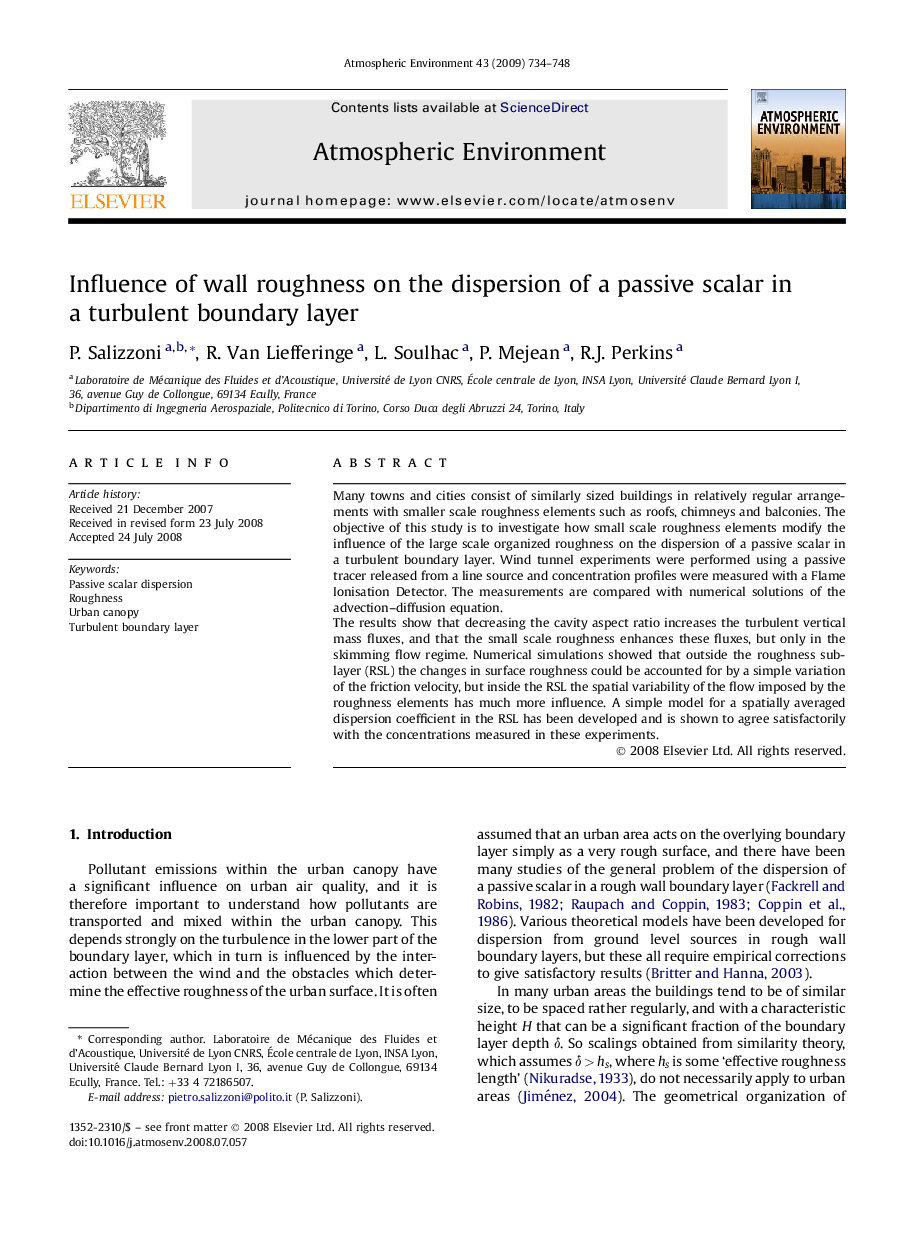| Article ID | Journal | Published Year | Pages | File Type |
|---|---|---|---|---|
| 4442305 | Atmospheric Environment | 2009 | 15 Pages |
Many towns and cities consist of similarly sized buildings in relatively regular arrangements with smaller scale roughness elements such as roofs, chimneys and balconies. The objective of this study is to investigate how small scale roughness elements modify the influence of the large scale organized roughness on the dispersion of a passive scalar in a turbulent boundary layer. Wind tunnel experiments were performed using a passive tracer released from a line source and concentration profiles were measured with a Flame Ionisation Detector. The measurements are compared with numerical solutions of the advection–diffusion equation.The results show that decreasing the cavity aspect ratio increases the turbulent vertical mass fluxes, and that the small scale roughness enhances these fluxes, but only in the skimming flow regime. Numerical simulations showed that outside the roughness sub-layer (RSL) the changes in surface roughness could be accounted for by a simple variation of the friction velocity, but inside the RSL the spatial variability of the flow imposed by the roughness elements has much more influence. A simple model for a spatially averaged dispersion coefficient in the RSL has been developed and is shown to agree satisfactorily with the concentrations measured in these experiments.
